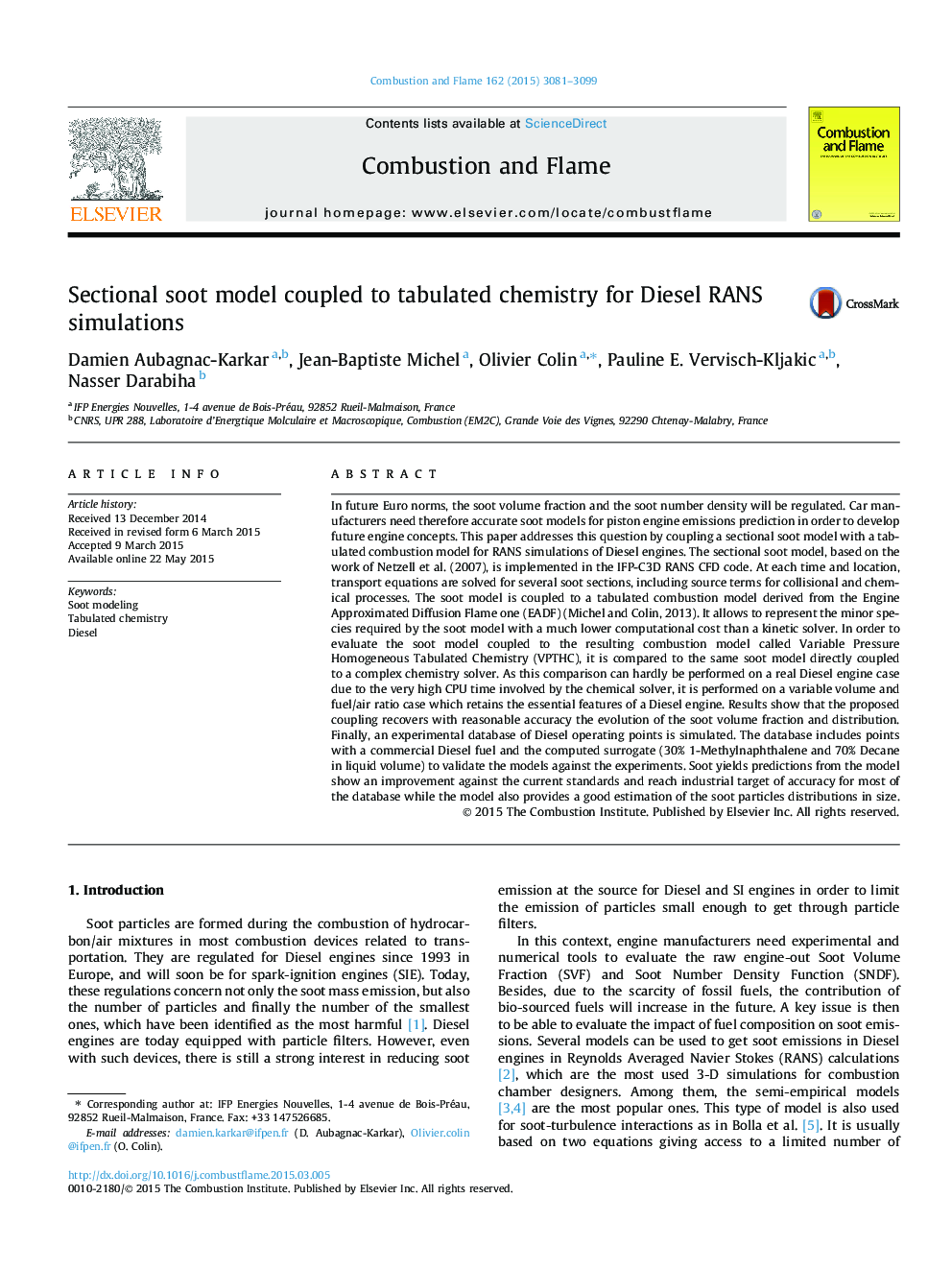| کد مقاله | کد نشریه | سال انتشار | مقاله انگلیسی | نسخه تمام متن |
|---|---|---|---|---|
| 168513 | 457935 | 2015 | 19 صفحه PDF | دانلود رایگان |

In future Euro norms, the soot volume fraction and the soot number density will be regulated. Car manufacturers need therefore accurate soot models for piston engine emissions prediction in order to develop future engine concepts. This paper addresses this question by coupling a sectional soot model with a tabulated combustion model for RANS simulations of Diesel engines. The sectional soot model, based on the work of Netzell et al. (2007), is implemented in the IFP-C3D RANS CFD code. At each time and location, transport equations are solved for several soot sections, including source terms for collisional and chemical processes. The soot model is coupled to a tabulated combustion model derived from the Engine Approximated Diffusion Flame one (EADF) (Michel and Colin, 2013). It allows to represent the minor species required by the soot model with a much lower computational cost than a kinetic solver. In order to evaluate the soot model coupled to the resulting combustion model called Variable Pressure Homogeneous Tabulated Chemistry (VPTHC), it is compared to the same soot model directly coupled to a complex chemistry solver. As this comparison can hardly be performed on a real Diesel engine case due to the very high CPU time involved by the chemical solver, it is performed on a variable volume and fuel/air ratio case which retains the essential features of a Diesel engine. Results show that the proposed coupling recovers with reasonable accuracy the evolution of the soot volume fraction and distribution. Finally, an experimental database of Diesel operating points is simulated. The database includes points with a commercial Diesel fuel and the computed surrogate (30% 1-Methylnaphthalene and 70% Decane in liquid volume) to validate the models against the experiments. Soot yields predictions from the model show an improvement against the current standards and reach industrial target of accuracy for most of the database while the model also provides a good estimation of the soot particles distributions in size.
Journal: Combustion and Flame - Volume 162, Issue 8, August 2015, Pages 3081–3099